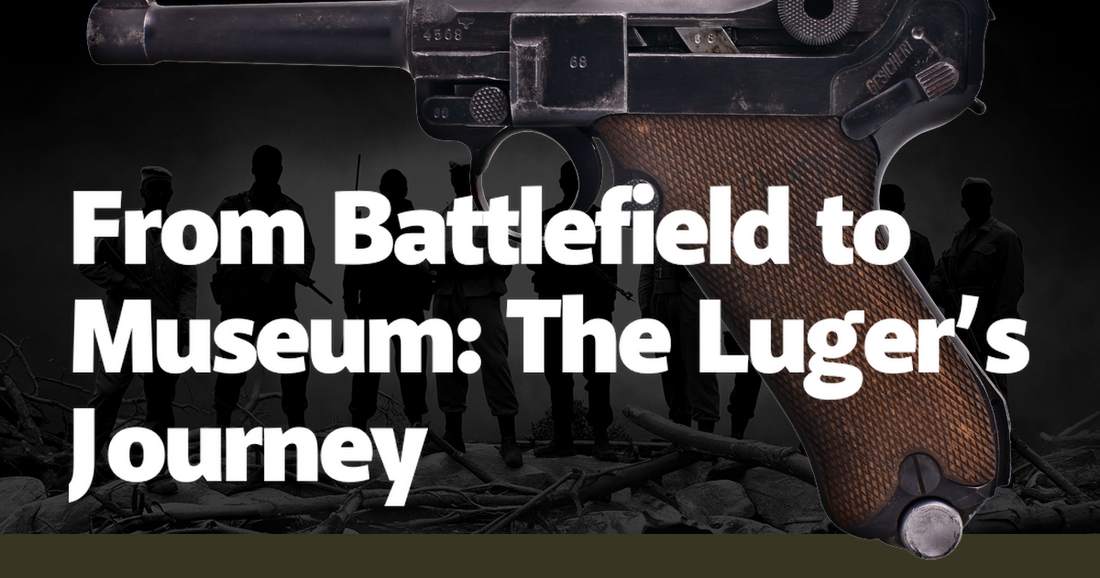The Luger pistol, officially known as the Pistole Parabellum, is more than just a firearm; it is a symbol of engineering prowess and historical significance. Originating in Germany at the turn of the 20th century, the Luger was designed by Georg Luger and quickly became an iconic weapon due to its unique toggle-lock mechanism and ergonomic design. Its journey from the battlefields of two World Wars to the glass cases of museums around the world is a tale of innovation, conflict, and legacy. This journey not only reflects the technological advancements of the early 1900s but also encapsulates the broader historical narratives of the times.
During World War I, the Luger was the standard-issue sidearm for the German military, revered for its accuracy and reliability. Anecdotes from the trenches often highlighted the Luger’s distinctive sound and precision, which made it a prized possession among soldiers. Its 9mm Parabellum cartridge, which Georg Luger himself developed, provided a balance of stopping power and manageable recoil. The pistol's role in the war extended beyond mere functionality; it became a symbol of German engineering and military might. Stories of soldiers trading their own weapons for a captured Luger were not uncommon, underscoring its desirability and the aura it carried on the battlefield.
World War II saw the Luger continue its service, although by then it had been largely supplanted by the Walther P38 as the standard-issue sidearm. However, the Luger retained its status among officers and elite units. Its distinctive silhouette became synonymous with the German military presence. Veterans from Allied forces often recounted their encounters with the Luger, describing it as both a formidable weapon and a coveted war trophy. The pistol’s presence in the hands of both Axis and Allied soldiers created a complex web of stories, each adding to its mythos.
As the war ended and soldiers returned home, many brought Lugers with them, further cementing the pistol's legendary status. These war trophies, often passed down through generations, became tangible links to the past, each with its own story. Some were displayed proudly, while others were tucked away, their significance known only to the families who owned them. The Luger, in this way, became a bridge between personal and collective histories, a relic that connected the present to the tumultuous past.
The post-war years saw a growing interest in military memorabilia, and the Luger became a focal point for collectors and historians alike. Museums around the world began to showcase these pistols, not merely as weapons but as artifacts that told a broader story of conflict, innovation, and human experience. Detailed exhibits highlighted the Luger’s design features, its production history, and its role in the broader context of 20th-century warfare. Curators worked meticulously to preserve these pistols, understanding that each one was a piece of history.
One notable example is the Luger displayed at the Imperial War Museum in London. This particular pistol, captured during the North African campaign, is accompanied by the story of the soldier who brought it back. The exhibit includes personal letters and photographs, providing a deeply human context to the otherwise cold, mechanical object. Such displays offer visitors a multifaceted understanding of the Luger, blending technical details with personal narratives.
The Luger’s transition from battlefield to museum also reflects broader societal changes in how we perceive and remember war. Initially seen as a tool of conflict, the pistol has evolved into a symbol of history and memory. Museums play a crucial role in this transformation, providing spaces where objects like the Luger can be studied, understood, and appreciated in new ways. These institutions help us grapple with the complexities of our past, using artifacts to tell stories that resonate across generations.
In conclusion, the Luger’s journey from battlefield to museum is a testament to its enduring significance. It serves as a powerful reminder of the human capacity for both innovation and destruction. As we continue to study and preserve these pistols, we honor the memories of those who lived through the conflicts they represent. The Luger, in its sleek design and storied past, remains a poignant symbol of a century marked by unprecedented upheaval and change. Through its preservation, we ensure that future generations can learn from and reflect on the lessons of history.

